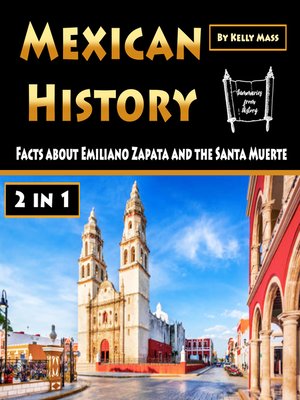Mexican History
audiobook (Unabridged) ∣ Facts about Emiliano Zapata and the Santa Muerte
By Kelly Mass

Sign up to save your library
With an OverDrive account, you can save your favorite libraries for at-a-glance information about availability. Find out more about OverDrive accounts.
Find this title in Libby, the library reading app by OverDrive.



Search for a digital library with this title
Title found at these libraries:
| Library Name | Distance |
|---|---|
| Loading... |
This combo consists of 2 books:
1 - Emiliano Zapata Salazar was a revolutionary in Mexico. He was a key figure in the Mexican Revolt of the years 1910 until 1920, and also the primary leader of the people's revolution in the Mexican state of Morelos and the creator of the Zapatismo agrarian movement. Zapata was born in the rural town of Anenecuilco in the state of Morelos, at the time of a period when peasant communities dealt with increasing pressure from the small-landowning class, which monopolized land and water resources for sugar-cane production with the support of totalitarian Porfirio Daz (President from the year 1877 to 1880 and from 1884 to 1911). Zapata was associated with political efforts against Daz and the landowning hacendados from an early age, and when the Revolution emerged in the year 1910, he was placed as a key figure in the peasant insurgence in Morelos. He established the Freedom Army of the South with the help of certain other peasant leaders, and he rapidly rose to become its undisputed head.
2 - The cult image, female divine being, and folk saint Nuestra Seora de la Santa Muerte (Spanish meaning: Our Woman of the Holy Death) is a cult image, female divine being, and folk saint in Mexican Neopaganism and folk Catholicism. Her worshippers relate her with healing, security, and safe delivery to the afterlife simply because she's a personification of death. In spite of condemnation from Catholic Church leaders and, more just recently, evangelical movements, her following has grown substantially since the start of the twenty-first century. Santa Muerte, who was initially portrayed as a male character, is now generally illustrated as a skeletal female figure dressed in a long cape and clutching several things, most typically a scythe and a world.







